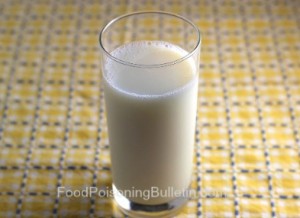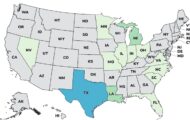A new study published December 10, 2014 in the Center for Disease Control and Prevention’s Emerging Infectious Diseases Journal shows that the average number of yearly outbreaks due to drinking raw milk more than quadrupled from the last study conducted eight years ago. There was an average of three outbreaks every year during the time period of 1993 to 2006. During the time period of 2007 to 2012, there were 13 outbreaks every year.
 Overall, there were 81 outbreaks associated with raw milk from 2007 to 2012. Almost 1,000 people were sickened and 73 hospitalized as a result of their illnesses. And more than 80% of the outbreaks occurred in states where raw milk sales are legal.
Overall, there were 81 outbreaks associated with raw milk from 2007 to 2012. Almost 1,000 people were sickened and 73 hospitalized as a result of their illnesses. And more than 80% of the outbreaks occurred in states where raw milk sales are legal.
As more states allow the sale of raw milk, outbreaks are rapidly increasing. Eight states have legalized raw milk sales since 2004. Now raw milk sales are legal in 30 states. The report says, “if more states begin allowing sales of raw milk, the number of outbreaks and illnesses will continue to rise. CDC recommends against consuming raw milk, especially for people who may be more likely to suffer severe illness (children, senior citizens and people with weakened immune systems).”
Consumption of raw, or unpasteurized, milk is associated with serious illness caused by several dangerous microorganisms, including Shiga toxin-producing E. coli, Salmonella, and Campylobacter. The demand for raw milk has increased despite the health risks.
A foodborne illness outbreak is defined as at least 2 cases of the same illness resulting from eating a common food. The government analyzed outbreaks reported during 2007 to 2012 in which the food vehicle was unpasteurized milk. Outbreaks associated with cheese and other dairy products made from raw milk were excluded. The causative agent was found and reported for all outbreaks.
Campylobacter was the most common pathogen in these outbreaks, followed by E. coli, Salmonella, and Coxiella. Three outbreaks were caused by more than one pathogen. And for 59 of these outbreaks, at least 1 patient under the age of five years was involved.
The study also found that making raw milk sales legal in one state can lead to outbreaks in neighboring states. In 2011, a Campylobacter outbreak associated with non pasteurized milk in North Carolina was caused by milk purchased from a buying club in South Carolina. In 2012, a Campylobacter outbreak from non pasteurized milk in Pennsylvania caused illnesses in residents of Maryland, West Virginia, and New Jersey, which all prohibit raw milk sales.
The report ends by stating, “outbreaks associated with non pasteurized milk continue to pose a public health challenge. Public health officials should continue to educate legislators and consumers about the dangers associated with consuming non pasteurized milk.”




